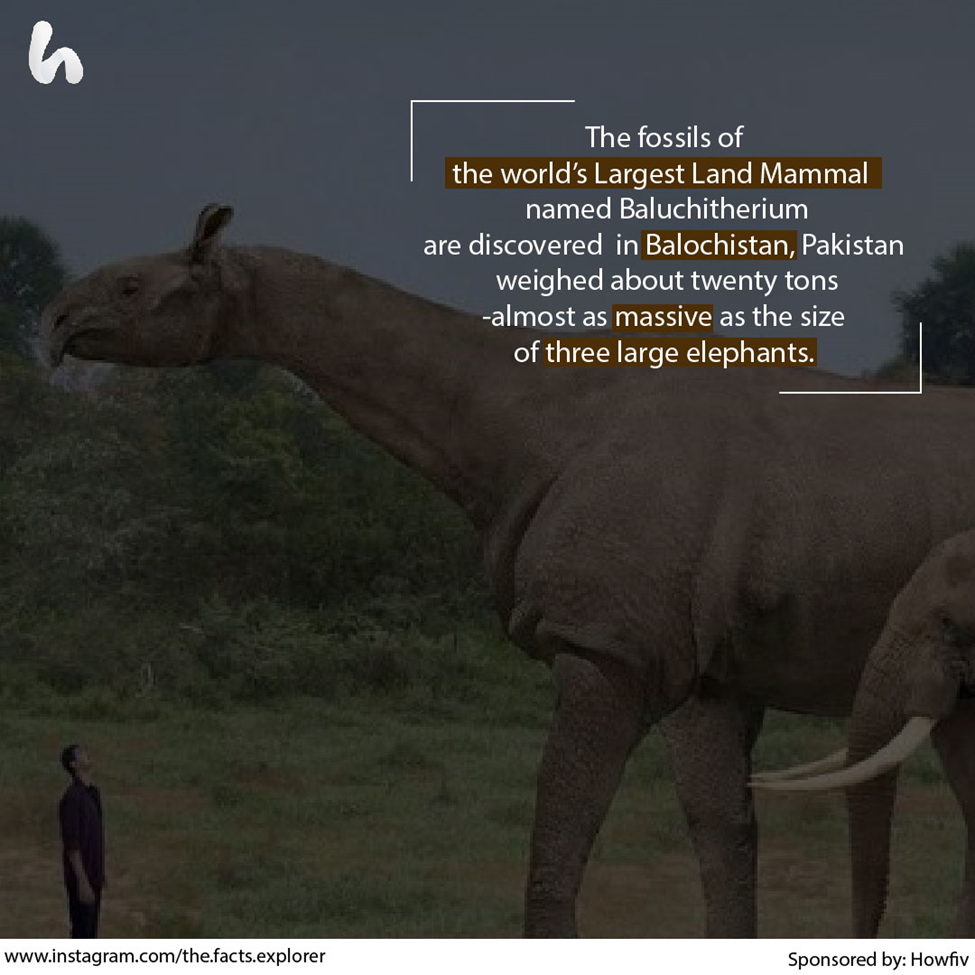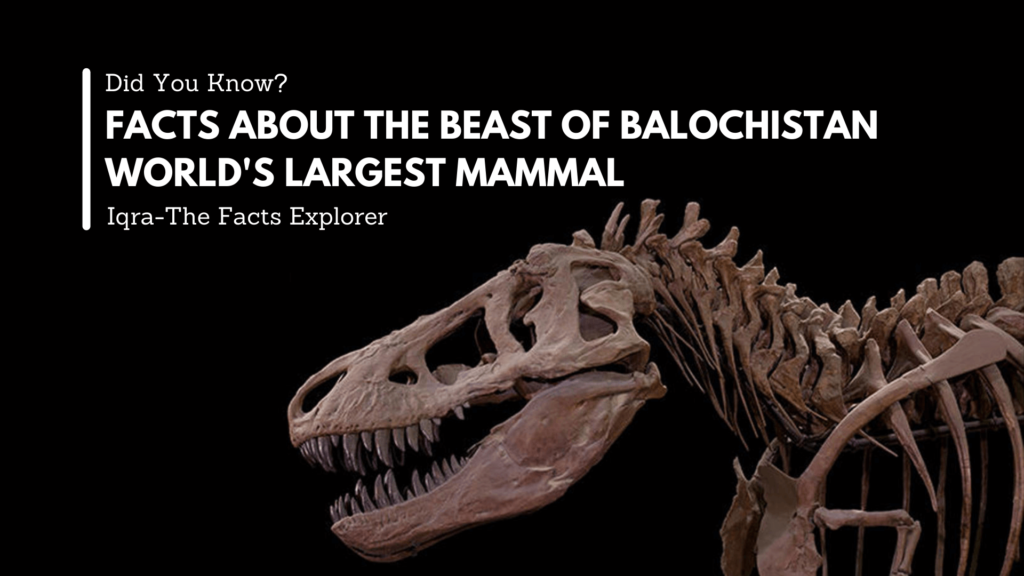Before man ruled the world, the earth was a land of giants. Dinosaurs around the world are among those mind-blowing giants. However, in Pakistan, the beast of Baluchistan stands largest with surprising size and characteristics, which manifests Baluchistan’s importance and value even centuries ago.
Baluchitherium, the beast of Balochistan, was one of the world’s largest mammals ever walked on the face of the earth. It was a Rhino like herbivore the fossils of which were discovered in the hills of Dera Bhugti in Baluchistan, Pakistan. According to palaeontologists, Baluchitherium existed some thirty million years ago in the Oligocene epoch. Hence, its scientific name was kept Paracheratherium Bugti-Ense.
Sir Clever Forster was the palaeontologist who first explored the fossils of Baluchitherium. However, little was done in this regard till the end of the twentieth century. In 1990, an eminent French palaeontologist Jean-Loup Welcome restarted extravasation with the help of Pakistan Museum of Natural History and Nawab Akbar Khan Bugti, the then governor of Balochistan, to unearth other remains of the creature that was unheard of. His ongoing efforts made him discover the first finger of the Baluchitherium in 1997.
It took five years to build a composite skeleton of the Baluchitherium out of the gathered remains. From the assembled skeleton, it was estimated that the giant creature was about five meters tall. Contrarily, defining the mass of a non-existent creature was a tricky thing. For this purpose, scientists measured the various parameters of bones and teeth and then calculated the weight out of the measurements accordingly. According to them, the hurricane weighed about twenty tons-almost as massive as the size of three large elephants.

Why did the Baluchitherium become extinct is another curiosity, the explanation of which also proved quite stunning. Interestingly, Baluchistan was not always the same rocky land; rather, it was a lush green valley with all the life and cultivation. Some twenty-two million years ago, the tectonic and paleogeographic evolution of Asia and Africa destroyed the Tethys Sea, which gradually changed the climate of Asia. Owing to the disappearance of the most important water body, the vegetation of Balochistan also vanished, and a large number of animals including Baluchitherium became extinct in the battle of survival.
Fortunately, the discovery of Baluchitherium was interesting enough to encourage Welcomme to uncover the entire environment Baluchitherium shared. Resultantly, diversified fossils of fish, turtles, crocodiles, rodents, and other small mammals were located. Additionally, his team also found historical plants, trees, flowers, and leaves.
Hence, Hence, Balochistan had not only been the home to Baluchitherium but also multiple marine and land animals and plants. Moreover, an epicontinental sea existed in the heart of Balochistan around 32 million years ago; Baluchistan with a different environment than the present day.
Gifted writer, Nigel Calder, wrote in his book:
“By the boldest interpretations of genetic geography,
modern humans may have emerged in South-central Asia-
perhaps somewhere east or southeast of the Caspian Sea
on the Kazakhstan-Balochistan axis-because that is
where the indigenous populations are most “intermediate”
between genetic extremes of Africa, Australia, and the Americas.”
Time Scale: page 58












